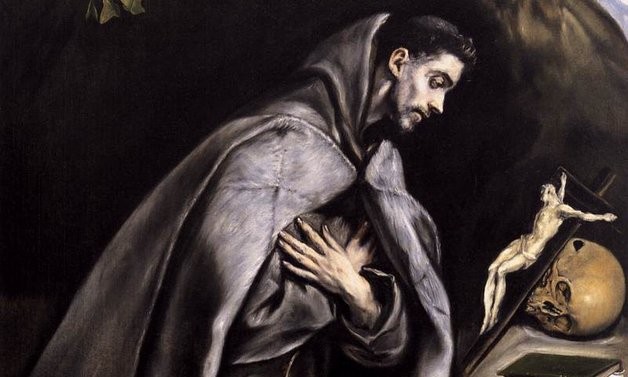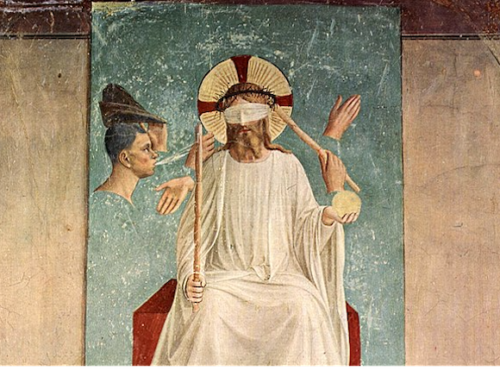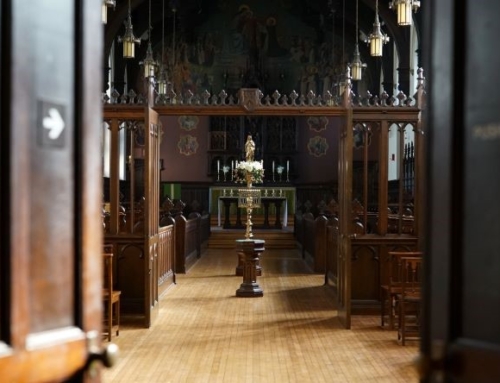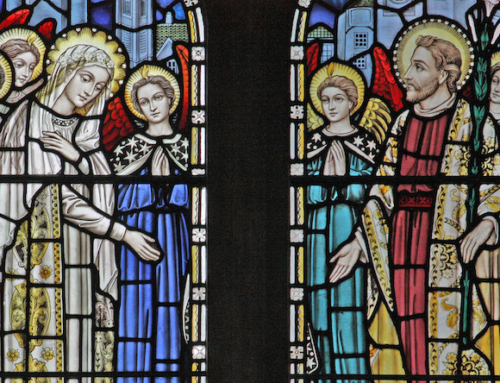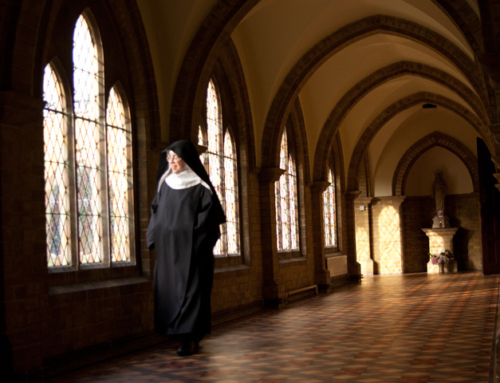This is the third post in a five-part series marking the opening of the Year of Consecrated Life.
When, on that fateful day in 1205, Francis of Assisi impulsively gave away his luxurious clothes to a poor soldier, the man who would become the world’s most revered saint opened his life–his very heart and will–to a series of divine interventions. God would pour grace upon grace into the vagabond beggar of Assisi, and through him offer the Church one of her most extraordinary witnesses of Christian discipleship.
I understand that I’m in the minority here, but I was always kinda nervous about St. Francis. I know, I know… He’s probably the best-loved saint in Christendom, and I just said he makes me a little uneasy. But here’s why: the thing about truly holy men and women is that they’re totally unpredictable. Because they’re given completely over to the designs of the Holy Spirit, you never know what’s going to happen around them. Thus St. Francis, about whom there are stories of erratically repairing a dilapidated church, throwing himself on thorn bushes, venturing to the Holy Land during the middle of a war to try and convert a Muslim caliph, and spontaneously casting off his clothes.
Christ Crucified
Yet it is out of the life of St. Francis that the essential marks of Franciscan spirituality can be discerned (though, we should note, the brothers and sisters who give their lives following in Francis’ footsteps–even down to our own day–inevitably lend their own, subsequent contributions!). We can reasonably say a fundamental mark of Franciscan spirituality is a compelling Christocentricity. For St. Francis, it’s all about Jesus. When he embraces the mysterious leper, St. Francis cradles Christ, despised and scorned (Isa. 53:3).
The crucified Christ calls St. Francis three times from the San Damiano cross, “Francis, go, rebuild my church.” St. Anthony of Padua, noble son of Francis would later preach: “Christ stands in the middle of every heart; he stands in the middle, as the axis, so that from himself all the lines of grace may emanate to us, we who are on the circumference, who revolve around him and walk about him” (Sermones dominicales et in solemnitatibus, in octava Paschae). So marked by Christ was Francis that he would literally bear the wounds of Jesus on his own body. St. Bonaventure writes, recalling the moment when St. Francis received the stigmata (the wounds of the crucifixion), “that angelic man…descended from the mountain [La Verna, Alverna] carrying with him an image of the crucified, not handmade on tablets of stone or wood, but inscribed in the members of his flesh by the finger of the Living God.” Devotions to Christ, such as the Christ child in Nativity scenes or the Stations of the Cross, have been handed down through the centuries, marking the Franciscan way of life.
Because of the closeness in ideals and mission of St. Dominic and St. Francis, Dominicans refer to the beloved saint of Assisi as “our holy Father Francis.” His witness reminds us that our mission is always to preach “Jesus Christ and him crucified” (1 Cor 2:2).
Love of Lady Poverty
St. Francis, and his sons and daughters, possess a radical love of poverty. For the Franciscan soul, simplicity of life is simply a must. In this way, Franciscan life imitates Christ, the poor one who is Lord. Il serafico poverello (the seraphic poor man, i.e. St. Francis) dearly loved Lady Poverty. In fact, legend has it, St. Francis once replied to friends (who were teasing him about his new way of life, asking if he ever intended to marry), “yes, a fairer bride than any of you have ever seen” (Sg 5:9). The organic development of the Franciscan Order posed many complications as to how poverty would be lived, even forcing adaptations to Francis’ ideal. Nevertheless, the substance of poverty–Queen of the Friars Minor–holds pride of place in Franciscan life and prayer. I get anxious when the fridge looks on the empty side or when I don’t have money to pay for something, but the Franciscans I know delight in these moments. Crying “God will provide,” they bound ever onward, and, you know, they’re never disappointed.
St. Francis reminds us of the crucified Christ, concerning whom we preach that “though he was rich, yet for [our] sake [he] became poor” (2 Cor 8:9), and so we should have a special love for the poor.
The Goodness of Creation
In my more misanthropic moments, I can fall prey to the temptation to reduce St. Francis to a tie-dye-wearing, tree-hugging, flower child. No saint is greater honored in gardens, nor is any saint depicted so often accompanied by animals that look like they fell out of a Disney cartoon and were turned to stone. Furthermore (that’s right, I’ve chosen to further incriminate myself), the legends of the life of St. Francis–one of which is called the Fioretti or ‘little flowers’–pass on stories of St. Francis preaching to the birds and “brother wolf.” Even St. Francis’ famed hymn, the Canticle of the Sun, anthropomorphizes the world, singing of “Brother Sun” and “Sister Moon.” It’s almost too much for my little realist (stoney?) heart to bear…
The fact of the matter is, however, that the goodness of creation does need to be sung. Dangerous heresies of times past, like the teaching of the Manichees or their 13th-century heirs, the Albigensians, have preached the depravity of nature and the dangers of the world. The Franciscan love of creation ardently contests such faulty thinking, praising goodness wherever it is to be found. Linked with Francis’ warning about the danger of sin (his Canticle sings, “Woe to those who die in mortal sin!”) and with his love of sinners, exemplified in his desire to do penance, the Franciscan view presents a glorious harmony between the mystical body of Christ and the nobility of what God Himself has made.
St. Francis reminds us Dominicans that the Christ we preach one day “will transform our lowly body to be like his glorious body” (Phil 3:21).
For the Church
Today Franciscans distinguish themselves by offering the Church a remarkable witness of the Evangelical life, particularly in their service to the poor. The Holy Father himself took the name “Francis” because in the conclave a cardinal said to him, “Jorge, remember the poor!” Soup kitchens, inner-city parishes, healthcare ministries, schools with generous scholarships: these couldn’t contrast more starkly with the shadows of the world today. The Franciscans care for many of the sites of the Holy Land (including the Church of the Holy Sepulchre) and contribute widely to Catholic scholarship and education. Ultimately, the Franciscan life, witnessing joy and hope, touches those forgotten ones as only one radically given over to Christ can.
✠
Image: El Greco, St. Francis Meditating

